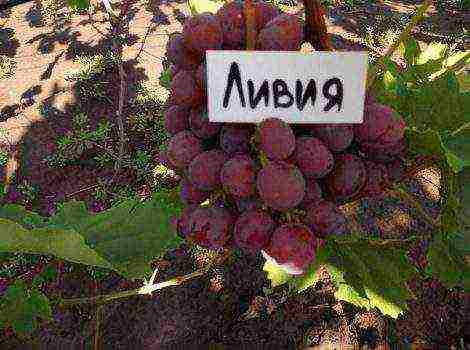Content
- 1 Description of the most popular varieties for the Moscow region and central Russia
- 2 The best large-fruited gooseberry varieties
- 3 The best winter-hardy gooseberry varieties
- 4 The best studless gooseberry varieties
- 5 Varieties and their types
- 6 The best varieties for the Moscow region and central Russia
- 7 The best gooseberry varieties with large fruits
- 8 The best winter-hardy gooseberry varieties
- 9 The best studless gooseberry varieties
- 10 Conclusion
Gooseberries can be found in almost every site in the central region of Russia. Gardeners often think about which variety to choose and plant. Let's try to figure it out together by reading the description of the most popular ones. Varieties are divided according to many criteria, Kolobok, Grushenka, Russian yellow and Amber are most suitable for the Moscow region... The most frost-resistant are Beryl, Ural emerald, Consul and others. The largest fruits are produced by the varieties Zashchitnik, Kooperator, Leningradets and others. They have excellent taste - Medovy, Kaptivator, Pushkin, Sadko, Laskovy, English, Mashenka and others. Thornless gooseberries are the safest, besides, it is easier to care for them, the best and most popular varieties are Eaglet, African, Thornless gooseberry and others.
Description of the most popular varieties for the Moscow region and central Russia
Grushenka
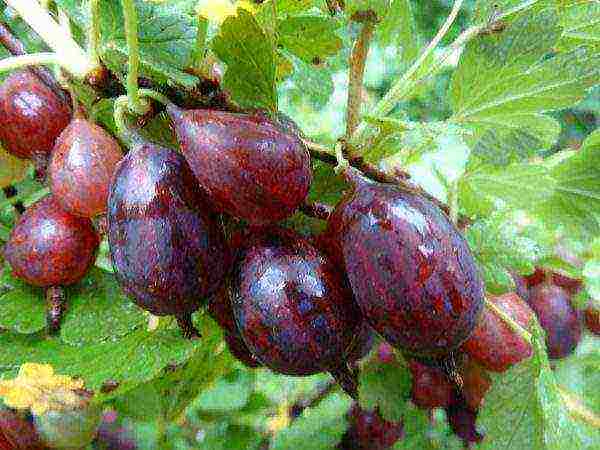 Gooseberry variety Grushenka
Gooseberry variety Grushenka
Medium-sized shrub with drooping branches. There are practically no thorns on the shoots. The berries are medium-sized, weigh on average 5 grams, the shape is pear-shaped, and the color changes as the fruits ripen (from pale red to deep purple). The variety is perfect for growing in central Russia, it is able to easily endure frosts, winter cold and drought. It is immune to many diseases.
Russian yellow
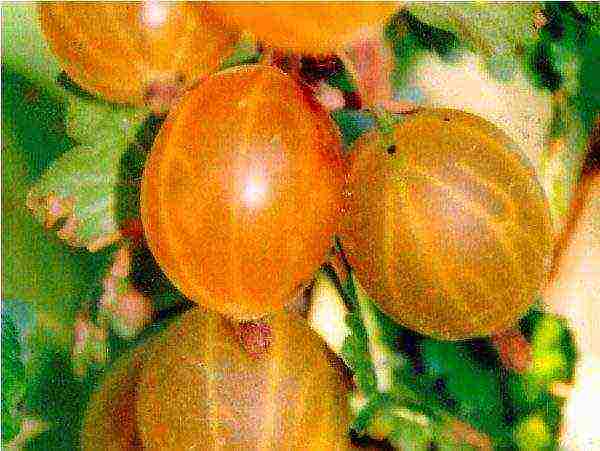 Gooseberry variety Russian yellow
Gooseberry variety Russian yellow
A low bush with medium spreading, covered with thorns throughout the area. Produces yellow pear-shaped fruits weighing up to 6 grams... The presence of a thin waxy coating is characteristic. The variety is distinguished by its excellent tolerance to sudden changes in temperature, frost and drought. Self-fertile, not affected by many common diseases.
Amber
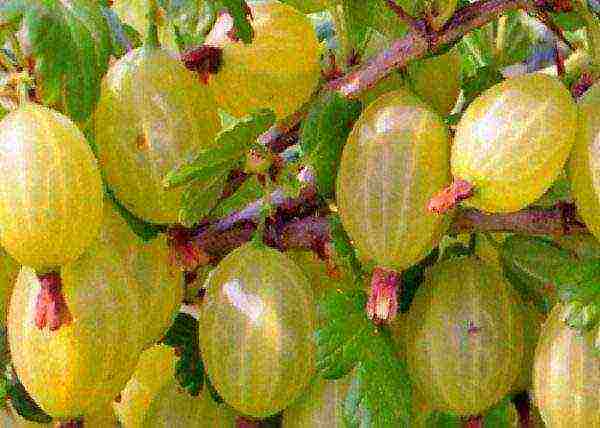 Gooseberry grade Amber
Gooseberry grade Amber
A tall shrub can grow up to 1.5 meters. The crown is dense and spreading, and there are also many thorny thorns on it. But all these disadvantages are offset by delicious and beautiful fruits. Berries are yellow-orange in color and oblong in shape, on average, weigh 5-6 grams... Amber gooseberries are early varieties and have a very high yield. Also, this shrub tolerates frost and drought well.
Gingerbread man
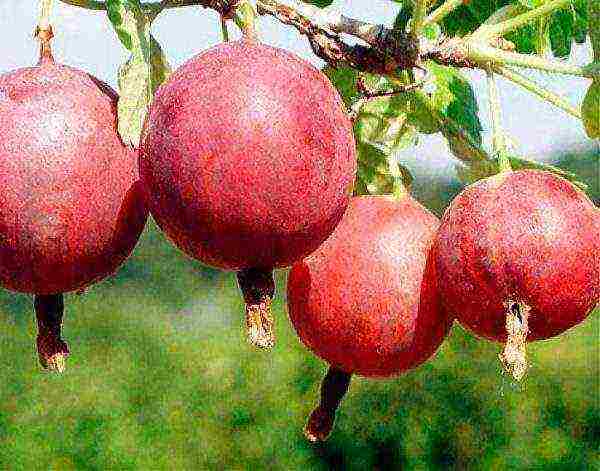 Gooseberry variety Kolobok
Gooseberry variety Kolobok
A medium-sized shrub with thorns, which are located singly, most often on the lower part of the branches. Fruits are large in size, their weight reaches 7 grams... The shape of the berries is slightly elongated, the color is pale red. The taste is pleasant, sweet and sour. The variety tolerates frost well, is resistant to anthracnose and powdery mildew.
The best large-fruited gooseberry varieties
Defender
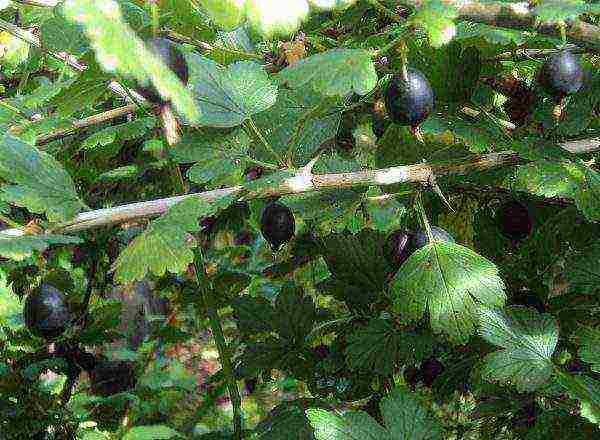 Gooseberry variety Defender
Gooseberry variety Defender
A tall shrub with powerful branches and a straight crown. The mass of berries can reach 10 grams, their shape is oval-pear-shaped, the color is burgundy, almost black... The taste of the fruit is sweet and sour. Refers to varieties with a late ripening period. The defender tolerates frost well, does not undergo powdery mildew.
Cooperator
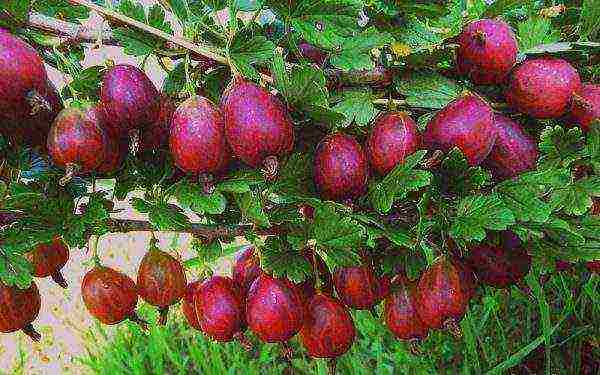 Gooseberry variety Cooperator
Gooseberry variety Cooperator
This type of shrub has a medium height and a sparse, slightly spreading crown with a small number of thorns. On average, one berry weighs 7 grams, pear-shaped, dark red color... Such fruits are considered dessert, they are very tasty and sweet. Up to 5 kilograms of harvest can be harvested from one bush, the ripening period is medium late. Another advantage of the variety is its resistance to cold weather and fruit rot.
Leningrader
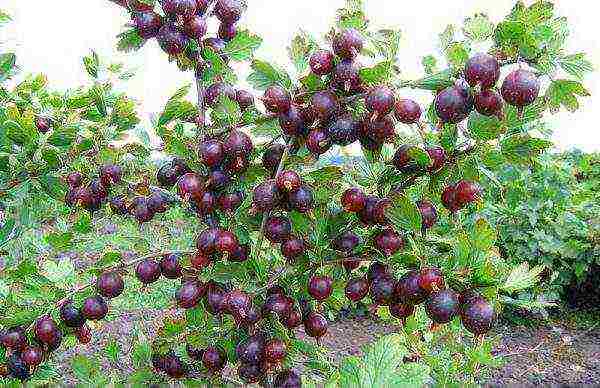 Gooseberry grade Leningradets
Gooseberry grade Leningradets
A bush of medium height with a semi-spreading crown, thorns are practically absent. The berries are large, their weight can reach 10 grams, the shape resembles an inverted egg, the color is dark red... Gooseberry taste sweet and sour. From one bush, you can collect up to 7.5 kilograms of harvest, medium late ripening. The shrub is winter-hardy, moderately exposed to powdery mildew.
Spring
 Gooseberry variety Rodnik
Gooseberry variety Rodnik
Shrub of medium height with a compact, neat crown. On average, the fruits weigh 5-6 grams, but their weight can reach 8 grams, the shape is round-oval, the color is dull, yellow-green... The taste of such berries is very pleasant, sweet, they are suitable both for fresh consumption and for any kind of processing. The variety is resistant to frost and fungal diseases, it is distinguished by its ability to reproduce crops even under unfavorable climatic conditions.
The best winter-hardy gooseberry varieties
Beryl
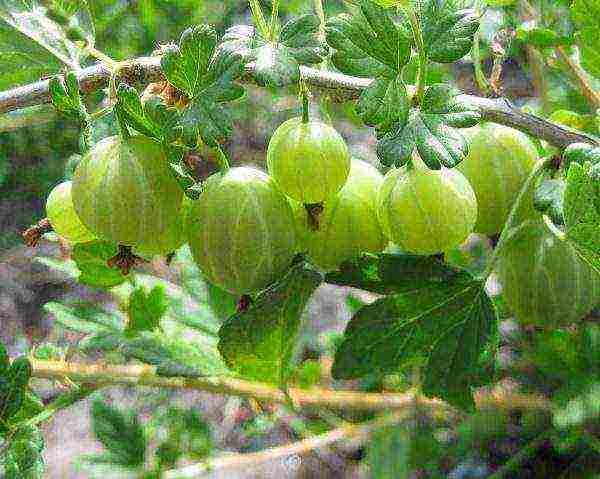 Gooseberry grade Beryl
Gooseberry grade Beryl
Medium-sized shrub with a neat crown. Thorns are present at the bottom of the shoot. The weight of the berries can reach 8-9 grams, the shape is spherical, the color is light green... The taste of the fruit is dessert, highly appreciated by professional tasters. One bush brings up to 9 kilograms of harvest and can survive frost down to -36 degrees. Also, the variety is resistant to fruit rot.
Ural emerald
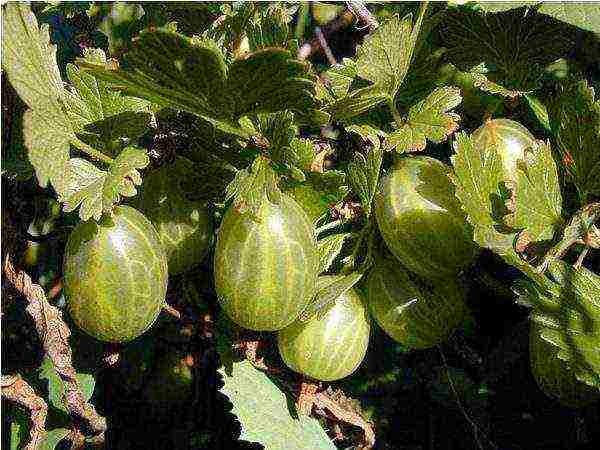 Gooseberry grade Ural emerald
Gooseberry grade Ural emerald
Medium-sized shrub with few thorns on the shoots. Berries are distinguished by the absence of pubescence, their weight can reach 8 grams... This variety got its name due to the bright color of the fruit with a dessert taste and pleasant aroma. The first harvest can be obtained at 3-4 years of life, the ripening period is medium early. Frost resistance is high, such a shrub can withstand cold temperatures down to -37 degrees.
Consul
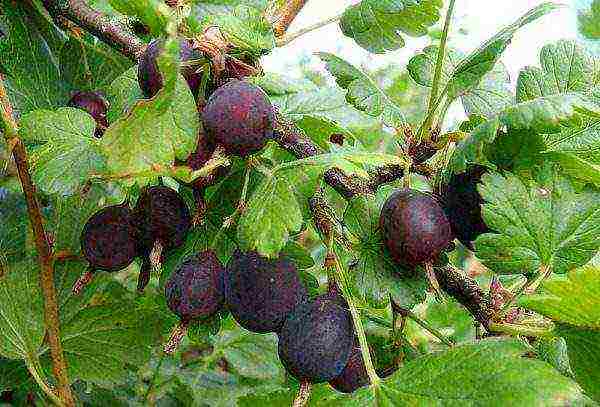 Gooseberry grade Consul
Gooseberry grade Consul
Another name for this variety is senator. A medium-sized bush with a dense crown, on which there are practically no thorns. The berries are large, their weight can reach 6 grams, the color is maroon, almost black... The skin of the fruit is very thin, so they do not tolerate transportation well. Also, such berries have very few seeds, which makes them an excellent jam. The shrub tolerates frosts well down to -37 degrees. In the first years of his life, the Senator gives little harvest, but over time this figure increases 2-3 times.
Belorussian
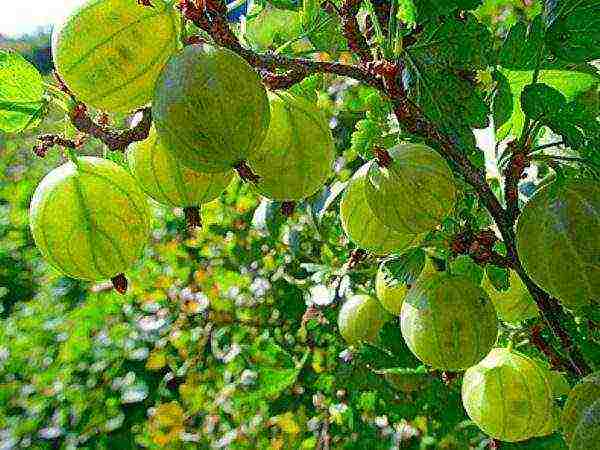 Gooseberry grade Belarusian
Gooseberry grade Belarusian
A small bush with a compact crown, on which there are a lot of sharp thorns. Ball-shaped berries weigh no more than 8 grams... The color is bright green. The taste is very pleasant, sweet, the skin of the fruit is thin, and the pulp is juicy and tender. The variety belongs to the old selection, has a very high frost resistance (up to -39 degrees). The harvest ripens in medium terms.
Krasnoslavyansky
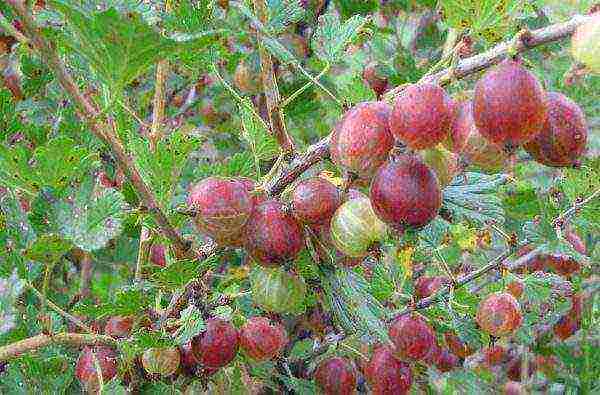 Gooseberry grade Krasnoslavyansky
Gooseberry grade Krasnoslavyansky
The bush is of medium height, slightly spreading, the crown is sparse, there are thorns on the shoots. The berries are large enough, the maximum weight can reach 9 grams, the shape is round, the color is deep red... There is practically no pubescence on the skin. The taste of this gooseberry is considered dessert.The first crop can be harvested already in the second year of the plant's life, but over time this figure becomes larger and reaches 6-7 kilograms. Also, the variety is very frost-resistant, resistant to powdery mildew.
The best studless gooseberry varieties
Eaglet
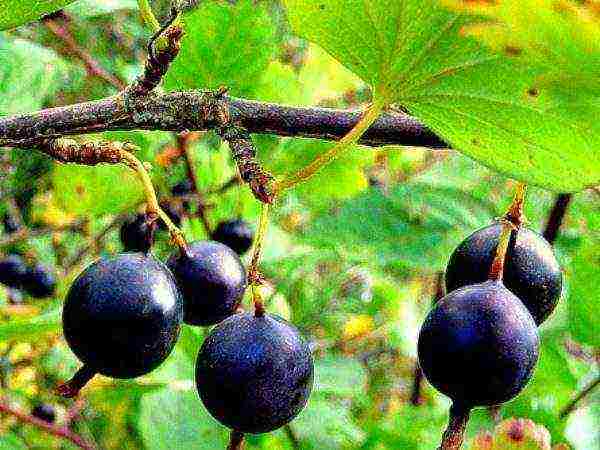 Gooseberry grade Eaglet
Gooseberry grade Eaglet
A medium-sized shrub with a neat and small crown. The lack of thorns makes this variety one of the most popular among gardeners. On average, one berry weighs 4-6 grams, the color is almost black... Differs in the presence of a light military raid and a pleasant sweet and sour taste. The crop ripens early, the shrub bears fruit annually and abundantly, resistant to frost and fruit rot.
African
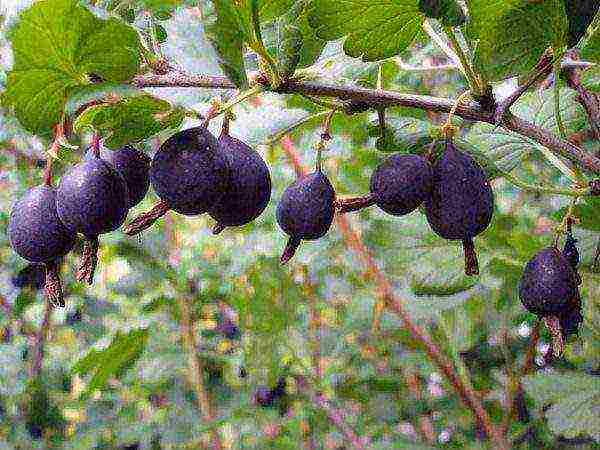 Gooseberry variety African
Gooseberry variety African
A medium-sized bush with no thorns. The berries are not large, rounded, dark purple in color... The taste of the fruit is sweet and sour, with light notes of black currant. The shrub begins to bear fruit in 2-3 years after planting, has good winter hardiness and resistance to many diseases. There is a risk of anthracnose contamination.
Northern captain
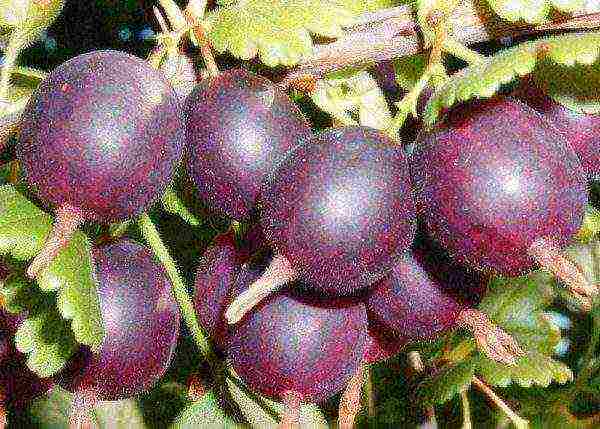 Gooseberry variety Northern Captain
Gooseberry variety Northern Captain
One of the most popular gooseberry varieties. A tall shrub with a narrow, neat crown, the branches of which grow straight up. Berries are dark, almost black in color, their weight can reach 4 grams... The taste of the fruit is pleasant, with a slight sourness. The ripening period of the crop is average. With proper care, up to 12 kilograms of fruit can be removed from one shrub... Among other things, the North Captain tolerates frost, drought well and is not exposed to many diseases.
Ural besshorny
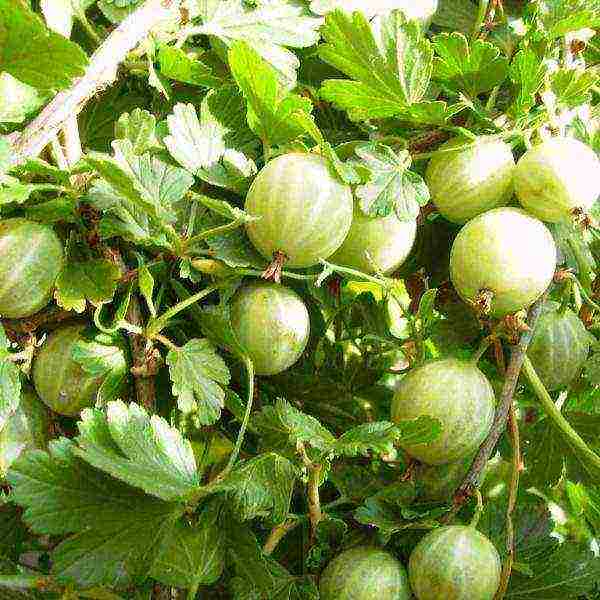 Gooseberry grade Ural Besshipny
Gooseberry grade Ural Besshipny
Medium-sized shrub that bears bright green, large (up to 8 grams) oval fruits... The variety is medium late, there is no pubescence on the skin, the fruit pulp is sweet and pleasant to the taste. The variety tolerates frost well, but may begin to drop berries ahead of time, which will lead to a loss of yield. Gooseberries are recommended to be picked a little earlier than they are fully ripe. In addition, the absence of thorns will make this process even easier and more enjoyable.
Thornless gooseberry
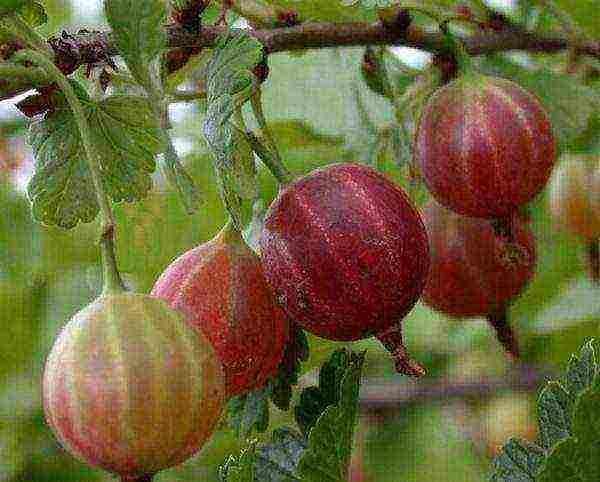 Thornless gooseberry
Thornless gooseberry
The bush is vigorous, but at the same time its crown is very compact, and the branches grow mainly upward. On average, the berries weigh 5 grams each, have a drop-like shape and a light red color.... The taste of the fruit is pleasant, sweet with a barely noticeable sourness. The variety tolerates winter cold well and is not subject to powdery mildew.
Both adults and children love gooseberries. A resident of any region will be able to choose a variety suitable for himself, you can also pick berries according to taste, size and other indicators... The modern market offers a huge variety of different varieties of gooseberries.

There are no 100% thornless gooseberry varieties, no matter how the sellers of seedlings assure you of the opposite. The fact is that thorns can suddenly appear on any gooseberry bush or, on the contrary, disappear - it depends on the peculiarities of caring for the bush and on its age. For example, in the weakly thorny Northern Captain, young seedlings are covered with sharp thorns, which after a while almost completely disappear, but Vladil's smooth shoots, on the contrary, subsequently grow thorns.
Popular gooseberry varieties without thorns
Ripe gooseberries are tasty and healthy; you can cook many interesting dishes from them and make preparations for the winter in the form of compotes, jams or preserves. But while you collect all the berries from the bush, you risk getting scratched from head to toe. For excessive thorniness and many gardeners do not like this unpretentious culture. Fortunately, breeders have long bred the thornless gooseberry, the bushes of which are almost completely devoid of thorns.
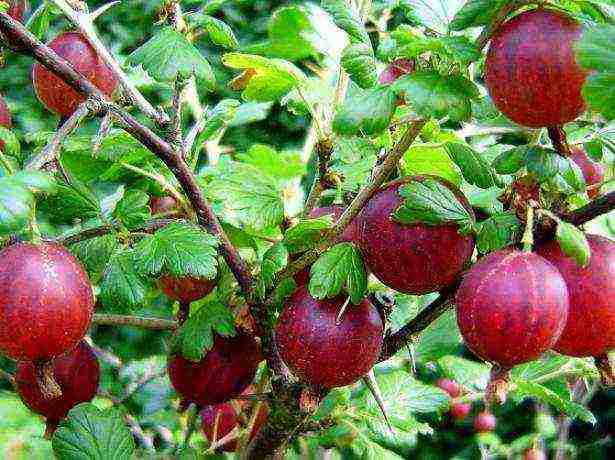
Thornless and weakly thorny gooseberries tolerate Russian harsh winters
Among gardeners, it is believed that thorny gooseberries produce more delicious fruits than gooseberries without thorns.In this case, is it worth planting a thornless gooseberry? In fact, the flavor of the berries is determined by the variety - some varieties have a mediocre taste, while others have a wonderful, full-bodied fruit flavor. In addition, thornless and weakly thorny gooseberries tolerate Russian harsh winters well, begin to bear fruit early and are not afraid of frosts characteristic of late spring. It was also noticed that bushes with weak thorniness are distinguished by significant resistance to powdery mildew.
Video about growing large gooseberries
Northern captain
In this variety, single thorns are extremely rare on the bush, we can say that the gooseberry is thornless. Oval berries of a black shade with a distinguishable waxy bloom are arranged in brushes of two or three pieces. Fresh fruits are of average taste, but excellent for making homemade wine. In addition, the North Captain has a high yield, resistance to cold and fungal diseases.
Malachite
On vigorous bushes, sparse thorns are evenly distributed throughout the shoot. Large green berries with delicate pulp and thin skin have a specific flavor, due to which they are most often used for compotes and preserves. High winter hardiness, excellent yield and resistance to powdery mildew are additional advantages of the variety.
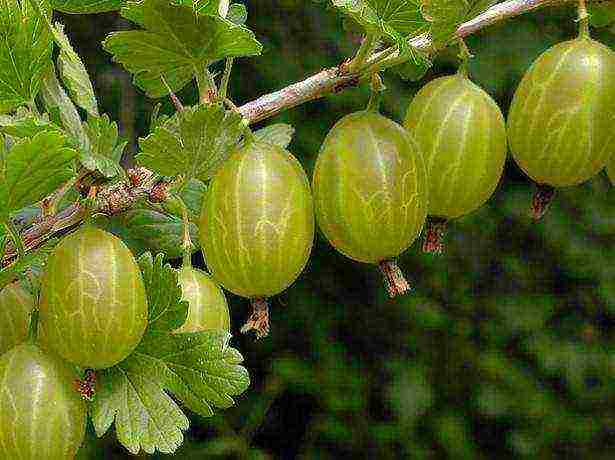
Gooseberry "Malachite"
African
In a medium-sized, moderately spreading bush, thorns are almost never found. Dark purple berries, covered with a waxy bloom, are distinguished by a light taste of black currant - they are tasty fresh, as well as in the form of compotes, jelly and jam. The African is resistant to powdery mildew, but there is a risk of being affected by anthracnose.
Lights of Krasnodar
If you are interested in thornless gooseberries with delicious berries, take a look at this variety. On the branches and shoots of a semi-sprawling bush, thorns are not found, dark red small fruits are pleasant to the taste. The Ogni Krasnodar variety is resistant to disease, drought and frost.
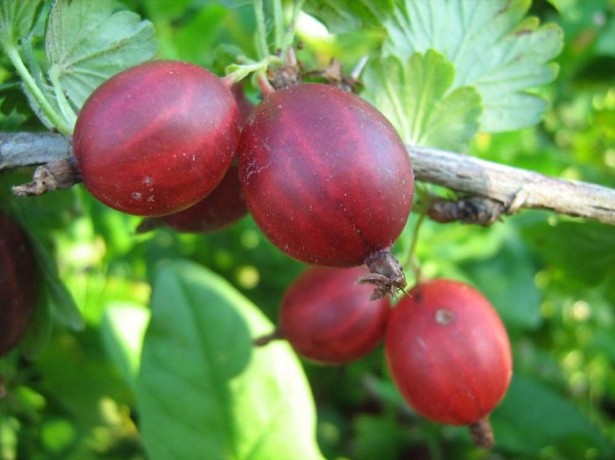
Variety Ogni Krasnodar resistant to disease, drought and frost
Sirius
Another thornless variety that deserves attention. Sirius is a non-prickly gooseberry, medium ripening. Medium-sized rounded berries are collected in a brush, one or two pieces, taste sweet and sour, suitable for fresh consumption and for harvesting for the winter. Sirius is resistant to fungal diseases and tolerates winter well.
Grushenka
On the shoots of the bush, thorns are almost imperceptible, the fruits of a characteristic pear-shaped shape grow in brushes in two pieces. Fully ripe berries are distinguished by a rich dark color, small seeds and a pleasant taste, rich in pectin substances.
Gingerbread man
This popular variety is valued for its thornlessness, rapid growth of the bush, good recovery from damage, large fruit size and early fruiting. However, Kolobok also has disadvantages: the gooseberry is sensitive to a sharp change in frost and thaw, too sprawling bush must be constantly cut off. And the rounded cherry-colored berries have a rather mediocre taste.
Video about the Kolobok gooseberry variety
Ural besshorny
The shoots of vigorous bushes are practically devoid of thorns, light green large fruits have a dessert sweetish taste with sourness, are used fresh and are used to prepare preparations for the winter. Powdery mildew of the Ural thornless gooseberry is rarely affected, it is resistant to other diseases.
As you can see, the breeders tried to diversify the thornless gooseberry - its varieties are currently very numerous and not similar to each other. In addition to the listed varieties, the studless and weakly thorny varieties are also noteworthy: Chernomor, Shalun, Yubilyar, Prune, Sadko, Pushkinskiy, Senator, Laskovy, Rodnik, Kolkhozny, Leningradets, Kooperator, Beryl.
Rate the article:
(5 votes, average: 4.2 out of 5)
In the central regions of Russia, gooseberries are grown in almost every plot. A detailed description of the variety and photos presented in the article will help you choose the best type of gooseberry, both for a novice gardener and an amateur gardener.
Varieties and their types
Effective, convenient and sooooo fast. When you need to lose 3-4 kilograms in a week. Read more here ...
The fruits of different varieties of gooseberries are different:
- Size and shape;
- Color (green, red, pink, yellow berries);
- The presence of thorns (thornless, strongly thorny and medium thorns varieties);
- Ripening period;
- Productivity.
Based on the reviews of summer residents, the best varieties of gooseberries include plants with a small number of straight shoots and a weak tendency to shoot. It is the bushes of these varieties that receive more sunlight and are well ventilated. These factors have a beneficial effect on the volume of the harvest and the palatability of the fruit.
The best varieties for the Moscow region and central Russia
"Grushenka"
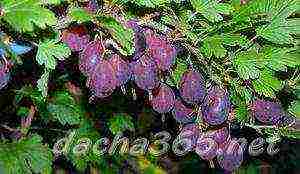 Medium-sized plant with drooping branches. The bushes have practically no thorns. The fruits are pear-shaped, small in size, weighing about 4.9 g per unit, the color of the skin changes depending on the degree of ripeness. Initially, the berries are pale reddish in color, when ripe are purple. The variety is recommended to be planted in the regions of central Russia, since "Grushenka" tolerates frost and hot, dry summers well. The variety does not suffer from diseases and viruses.
Medium-sized plant with drooping branches. The bushes have practically no thorns. The fruits are pear-shaped, small in size, weighing about 4.9 g per unit, the color of the skin changes depending on the degree of ripeness. Initially, the berries are pale reddish in color, when ripe are purple. The variety is recommended to be planted in the regions of central Russia, since "Grushenka" tolerates frost and hot, dry summers well. The variety does not suffer from diseases and viruses.
"Russian yellow"
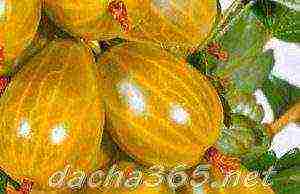 The plant is of yellow varieties and has medium spreading branches. The bushes are covered with a lot of thorns.
The plant is of yellow varieties and has medium spreading branches. The bushes are covered with a lot of thorns.
Berries are pear-shaped, yellowish, the weight of one unit is 6 grams. The fruits are covered with a layer of waxy coating.
"Russian yellow" is resistant to frost and does not suffer from drought, has immunity against viruses and diseases.
"Amber"
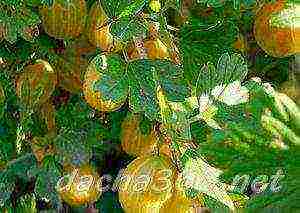 The height of the plant bushes is about 1.55 m. The branches are spreading, densely arranged and covered with thorns.
The height of the plant bushes is about 1.55 m. The branches are spreading, densely arranged and covered with thorns.
The berries are oblong, yellowish-orange in color, pleasant to the taste, the weight of one unit is from 5 to 6 grams.
"Yantarny" has an early ripening period and yields a consistently good harvest. The variety is frost and drought resistant.
"Kolobok"
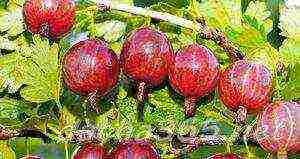 The lower part of the branches of the bush is covered with thorns. The plant is compact and medium in size. The berries are large, one weighs about 6.9 grams. The shape of the fruit is elongated, the skin color is light red. The pulp tastes sweet and sour. "Kolobok" tolerates frost and low temperature steadily. Has immunity against the following diseases: anthracnose and powdery mildew.
The lower part of the branches of the bush is covered with thorns. The plant is compact and medium in size. The berries are large, one weighs about 6.9 grams. The shape of the fruit is elongated, the skin color is light red. The pulp tastes sweet and sour. "Kolobok" tolerates frost and low temperature steadily. Has immunity against the following diseases: anthracnose and powdery mildew.
The best gooseberry varieties with large fruits
"Defender"
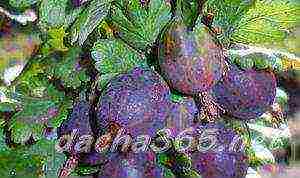 A plant with tall, powerful branches and an even crown. Represents large varieties. The weight of one berry is up to 10 grams, the shape is oblong-pear-shaped, the skin color is maroon.
A plant with tall, powerful branches and an even crown. Represents large varieties. The weight of one berry is up to 10 grams, the shape is oblong-pear-shaped, the skin color is maroon.
The fruit pulp tastes sour-sweet. "Defender" refers to early ripening varieties. The variety is resistant to low temperatures and is immune to powdery mildew.
"Candy"
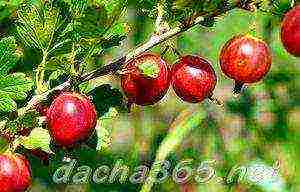 The bushes of the plant are covered with thorns. The fruits are large, the weight of one varies from 3 to 5.9 grams. The color of the berries is pink, the pulp is sweet and sour in taste, has a wonderful aroma.
The bushes of the plant are covered with thorns. The fruits are large, the weight of one varies from 3 to 5.9 grams. The color of the berries is pink, the pulp is sweet and sour in taste, has a wonderful aroma.
"Candy" is resistant to frost, does not need pollination. Each season brings from 1.9 to 6.3 kg per bush. Has immunity against powdery mildew and anthracnose.
This variety has a minus, "Candy" often becomes a victim of septoria. It is recommended to grow in the regions of Western and Eastern Siberia.
"Cooperator"
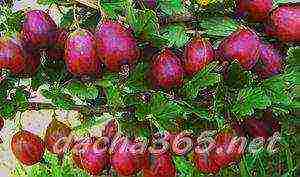 Has a medium late ripening period. Medium-sized plant with a slightly spreading crown. The branches have practically no thorns. The weight of one berry is about 7 grams, the shape is pear-shaped, the skin color is deep red.
Has a medium late ripening period. Medium-sized plant with a slightly spreading crown. The branches have practically no thorns. The weight of one berry is about 7 grams, the shape is pear-shaped, the skin color is deep red.
The pulp is tasty and sweet.From one bush, you can collect up to 5 kg of berries. "Cooperator" is a dessert variety. The species is not susceptible to the appearance of fruit rot and is resistant to frost.
"Leningradets"
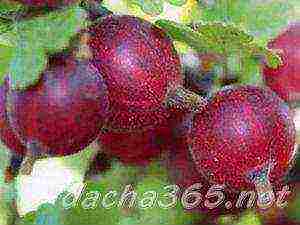 Medium-sized plant with a semi-spreading crown, few thorns on the branches. Has a medium late ripening period. The fruits are large, in the form of an egg, the weight of one is about 10 grams. The color of the berries is red, the flesh tastes sweet and sour. During the season, up to 7.6 kg of ripe gooseberries can be harvested from one bush. "Leningradets" tolerates low temperatures well and is not susceptible to the spread of powdery mildew.
Medium-sized plant with a semi-spreading crown, few thorns on the branches. Has a medium late ripening period. The fruits are large, in the form of an egg, the weight of one is about 10 grams. The color of the berries is red, the flesh tastes sweet and sour. During the season, up to 7.6 kg of ripe gooseberries can be harvested from one bush. "Leningradets" tolerates low temperatures well and is not susceptible to the spread of powdery mildew.
"Spring"
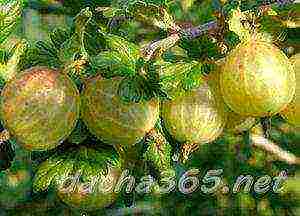 A plant of medium height forms a neat crown. The weight of one berry is from 5 to 6 grams, with proper care, the weight can increase to 8 grams. The fruits are round, oblong. The skin is dense, yellowish-green in color. The fruit pulp is sweet and tasty. Can be consumed both fresh and processed. "Rodnik" tolerates frost well and is resistant to the appearance and spread of fungal diseases.
A plant of medium height forms a neat crown. The weight of one berry is from 5 to 6 grams, with proper care, the weight can increase to 8 grams. The fruits are round, oblong. The skin is dense, yellowish-green in color. The fruit pulp is sweet and tasty. Can be consumed both fresh and processed. "Rodnik" tolerates frost well and is resistant to the appearance and spread of fungal diseases.
Interesting! Unfavorable weather conditions will not interfere with harvesting a rich crop from the bush.
The best winter-hardy gooseberry varieties
"Beryl"
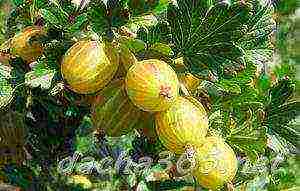 The shrub is medium in size, the branches form a neat crown. There are often thorns at the bottom of the shoots. The mass of one berry is from 7.9 to 9 grams, a round-shaped gooseberry of a greenish tint. It has excellent taste and belongs to the dessert varieties. Up to 9 kg of a mature crop can be harvested from one bush per season. "Beryl" is resistant to low temperatures up to - 35 degrees. Has immunity against fruit rot.
The shrub is medium in size, the branches form a neat crown. There are often thorns at the bottom of the shoots. The mass of one berry is from 7.9 to 9 grams, a round-shaped gooseberry of a greenish tint. It has excellent taste and belongs to the dessert varieties. Up to 9 kg of a mature crop can be harvested from one bush per season. "Beryl" is resistant to low temperatures up to - 35 degrees. Has immunity against fruit rot.
"Commander"
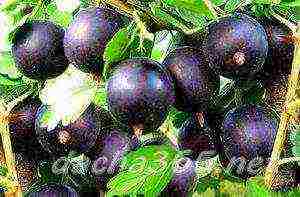 The variety obtained as a result of crossing "African" and "Chelyabinsk green". It has many benefits.
The variety obtained as a result of crossing "African" and "Chelyabinsk green". It has many benefits.
The crown of the plant is compact and dense, the shoots have thorns. The branches of the shrub are dotted with many berries of almost black color, the pulp of which has a pleasant taste.
"Ural Emerald"
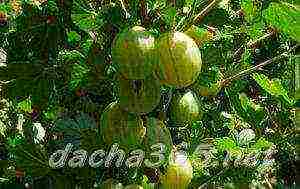 The plant has a medium-sized crown, not very tall, there are few thorns on the shoots. The fruits are smooth, have no pubescence, the weight of one unit is about 8g. The Ural Emerald is so called because the berries growing on its branches are bright. The pulp is tasty and aromatic. Ripe fruits can only be harvested 3-4 years after planting the shrub. The variety tolerates frost well and will not suffer at temperatures down to -37 degrees.
The plant has a medium-sized crown, not very tall, there are few thorns on the shoots. The fruits are smooth, have no pubescence, the weight of one unit is about 8g. The Ural Emerald is so called because the berries growing on its branches are bright. The pulp is tasty and aromatic. Ripe fruits can only be harvested 3-4 years after planting the shrub. The variety tolerates frost well and will not suffer at temperatures down to -37 degrees.
"Consul"
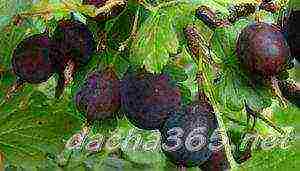 The variety has another name - "Senator". The plant is compact, medium in size with a dense crown and branches covered with thorns. The fruits are large, the weight of one unit is about 6 grams. The color of the berries is dark burgundy, rich. The skin is delicate and prone to damage, therefore it is not recommended to transport this type of gooseberry. Excellent cooking is obtained from the pulp, because there are practically no seeds inside. The plant is resistant to frost down to -38 degrees. The yield increases several times for 2-3 years after planting.
The variety has another name - "Senator". The plant is compact, medium in size with a dense crown and branches covered with thorns. The fruits are large, the weight of one unit is about 6 grams. The color of the berries is dark burgundy, rich. The skin is delicate and prone to damage, therefore it is not recommended to transport this type of gooseberry. Excellent cooking is obtained from the pulp, because there are practically no seeds inside. The plant is resistant to frost down to -38 degrees. The yield increases several times for 2-3 years after planting.
"Belorussian"
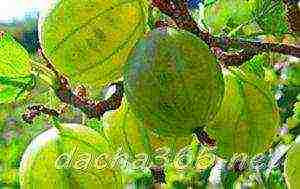 The plant is compact, small. The branches are dotted with many thorns. The fruits are round, the weight of one unit is about 8 grams. The skin is thin, deep green in color, has a shade that repeats the color tone of malachite. The pulp is pleasant to the taste, juicy and sweet. The variety is a representative of an old selection. "Belorussky" is resistant to low temperatures up to - 38.5 degrees. Has an average ripening period.
The plant is compact, small. The branches are dotted with many thorns. The fruits are round, the weight of one unit is about 8 grams. The skin is thin, deep green in color, has a shade that repeats the color tone of malachite. The pulp is pleasant to the taste, juicy and sweet. The variety is a representative of an old selection. "Belorussky" is resistant to low temperatures up to - 38.5 degrees. Has an average ripening period.
"Krasnoslavyansky"
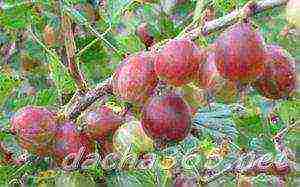 The plant is of medium size, the crown is not dense, it is formed by slightly spreading branches on which there are thorns. The gooseberry is large, round in shape, the weight of one unit is about 9 grams. The skin is smooth, without fluff and bloom, rich red color. Berries belong to dessert varieties, they have a pleasant taste.
The plant is of medium size, the crown is not dense, it is formed by slightly spreading branches on which there are thorns. The gooseberry is large, round in shape, the weight of one unit is about 9 grams. The skin is smooth, without fluff and bloom, rich red color. Berries belong to dessert varieties, they have a pleasant taste.
It's important to know! "Krasnoslavyansky" bears fruit the next year after planting. After a couple of years, 6 to 7 kg of ripe gooseberries can be harvested from the bush. The species tolerates frost well and is not susceptible to the appearance of powdery mildew.
The best studless gooseberry varieties
"Eaglet"
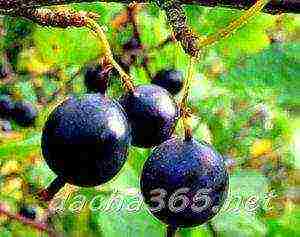 Bushes of medium height form a compact crown. The branches are smooth, without thorns. The variety is very popular in Russia among summer residents and gardeners. The mass of one berry is from 4 to 6 grams. Skin color is deep black. Above, the gooseberry covers a layer of plaque, under which thin skin and sweet and sour flesh are hidden. "Eaglet" ripens early and bears a good harvest every season. The species is not susceptible to the appearance of fruit rot and tolerates frost well.
Bushes of medium height form a compact crown. The branches are smooth, without thorns. The variety is very popular in Russia among summer residents and gardeners. The mass of one berry is from 4 to 6 grams. Skin color is deep black. Above, the gooseberry covers a layer of plaque, under which thin skin and sweet and sour flesh are hidden. "Eaglet" ripens early and bears a good harvest every season. The species is not susceptible to the appearance of fruit rot and tolerates frost well.
"African"
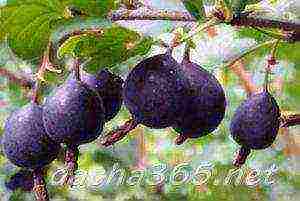 The plant is compact, small, smooth branches without thorns. The fruits are large, round, deep purple in color. Represents sweet varieties. The pulp is sweet with sourness, has a black currant flavor. Berries on the shoots appear in 2-3 years. "African" is not afraid of frost and has immunity against many diseases. There is a risk of anthracnose contamination.
The plant is compact, small, smooth branches without thorns. The fruits are large, round, deep purple in color. Represents sweet varieties. The pulp is sweet with sourness, has a black currant flavor. Berries on the shoots appear in 2-3 years. "African" is not afraid of frost and has immunity against many diseases. There is a risk of anthracnose contamination.
"Northern Captain"
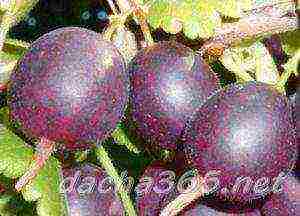 The most famous of all varieties of this garden culture. The branches of the plant are arranged vertically, they form a neat and compact crown. The color of the berries is rich, almost black. The weight of one unit is about 4 grams. The pulp is sweet, with a slight sourness, pleasant to the taste. "Northern Captain" matures in the medium term. If you constantly feed and fertilize the soil, you can achieve high yields, about 12 kg of berries per bush. The variety is resistant to frost, drought and disease.
The most famous of all varieties of this garden culture. The branches of the plant are arranged vertically, they form a neat and compact crown. The color of the berries is rich, almost black. The weight of one unit is about 4 grams. The pulp is sweet, with a slight sourness, pleasant to the taste. "Northern Captain" matures in the medium term. If you constantly feed and fertilize the soil, you can achieve high yields, about 12 kg of berries per bush. The variety is resistant to frost, drought and disease.
"Uralsky beshipny"
 The plant is compact in size with large green fruits. The weight of one unit is about 8 grams. The peel of the berries is dense, smooth, without fluff, hiding the sweet pulp. "Uralsky beshipny" has an average ripening period and is resistant to low temperatures.
The plant is compact in size with large green fruits. The weight of one unit is about 8 grams. The peel of the berries is dense, smooth, without fluff, hiding the sweet pulp. "Uralsky beshipny" has an average ripening period and is resistant to low temperatures.
Healthy! The disadvantage of this type is that it drops the berries ahead of time. Therefore, it is better to harvest the fruits before the stated ripening period. The branches of the shrub have no thorns.
"Thornless gooseberry"
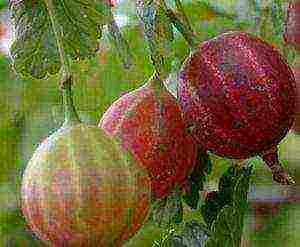 The branches of the shrub grow upward, they form a compact crown. The weight of one fruit is about 5 grams. The shape of the berries is ring-shaped, the skin is light red.
The branches of the shrub grow upward, they form a compact crown. The weight of one fruit is about 5 grams. The shape of the berries is ring-shaped, the skin is light red.
The pulp tastes sweet, pleasant with a slight sourness. "Thornless gooseberry" perfectly tolerates the cold season and is not susceptible to the spread of powdery mildew.
Conclusion
When choosing a variety for growing in your garden, you need to pay special attention to the ripening period of the fruits, their size, shape and taste. Both an experienced gardener and an amateur will find a species that will be ideal in all respects, since there are a huge variety of gooseberry varieties.
Watch the video! Overview of gooseberry varieties


